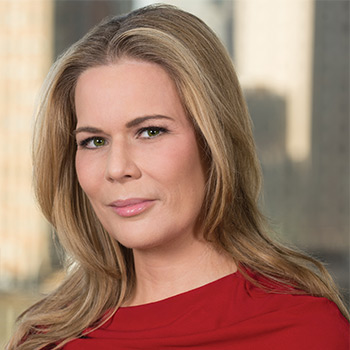If you have not discovered the Brookfield Limited Partnerships yet, it's about time you did. These spin-offs from Brookfield Asset Management (BAM) have provided us with handsome returns and I continue to recommended them, explains Gordon Pape, editor of Internet Wealth Builder.
Each partnership specializes in a specific area of business, but they all share the same basic structure. They are all Bermuda-based, all are listed in both New York and Toronto, and the parent company, retains an ownership stake in each.
There are four partnerships in total, three of which we recommend. Here is a rundown. All the partnerships report their financial results in U.S. currency and all figures that follow are in U.S. currency unless otherwise stipulated.
Brookfield Infrastructure Limited Partnership (BIP)
Annual payout: US$2.01
Yield: 4.8%
This was the original Brookfield partnership, spun out in early 2008. It owns an international portfolio of infrastructure companies operating in such sectors as utilities, transportation, energy, and communications. The limited partnership (LP) has a market cap of about $16.6 billion.
The objective is to generate a long-term return of 12 -15% on equity and provide sustainable distributions for unitholders while targeting annual distribution growth of 5-9%. The units have generated an average annual compound rate of return of 15% since the LP was spun out of the parent company.
The portfolio is impressive and growing. BIP owns 16,500 km of natural gas pipelines, 2,200 km of electricity transmission lines, 10,300 km of railroads, 4,200 km of toll roads, 5,500 km of fibre backbone, 37 ports, and 41 data centres. And that's just part of its total assets under management, which have a value of $65 billion.
Almost all of the assets are in investor-friendly countries, including Canada, Australia, Brazil, Chile, and Great Britain. The LP actively recycles capital, selling mature businesses and reinvesting the money in new projects that management believes have superior growth potential. In 2018 it recorded a net gain of $209 million relating to the sale of its Chilean electricity transmission business.
Currently, it is working to close the sale of its European bulk port operations, which is expected to produce an after-tax profit of $130 million. The goal is to generate total asset sales of $1.5 to $2 billion over the next 12-18 months.
Brookfield is turning over the money almost as fast as it comes in. The LP is in the process of acquiring a share of a South American data centre business for $200 million. This is a sector that management has identified as having great growth potential.
As well, the LP recently purchased a position in a pipeline in India for $230 million. For the first quarter, the LP reported funds from operations of $351 million ($0.88 per unit), compared to $333 million ($0.85 per unit) the year before.
This investment has been a big winner for us. Investors receive excellent cash flow (the distribution was recently increased by 7%) and those who bought at the time of our original recommendation have a capital gain of 341%.
The main risk is a slowdown in the world economy, which would have a negative impact on many aspects of the partnership's business. Action now: Buy.
Brookfield Renewable Partners (BEP)
Annual payout: US$2.06
Yield: 6.2%
Brookfield Renewable Partners operates one of the world's largest publicly-traded renewable power platforms. Its portfolio consists of over 17,400 MW of capacity and 880 generating facilities in North America, South America, Europe and Asia. The majority of the assets (75%) are in hydroelectric power. BEP also operates wind, solar, distributed generation, and storage facilities.
The investment objective is to deliver long-term annualized total returns of 12%-15%, including annual distribution increases of 5-9% from organic cash flow growth and project development.
The units began trading in Toronto in 2011 and in New York in 2013. However, our recommendation pre-dates that, going back to 2009 when it was trading as an income trust under the name Great Lakes Hydro. Those assets were subsequently folded into the new entity.
On May 2, the LP reported strong first-quarter results. Its share of power generation from the facilities in which it holds a position was 7,246 GWh. That compares to 6,694 GWh a year ago and a long-term average of 6,776 GWh.
Funds from operations were $227 million ($0.73 per unit), up from $193 million ($0.62 per unit) the year before. Net income was $43 million ($0.14 per unit) compared to $8 million ($0.03 per unit) for the same period in 2018.
Like the Infrastructure LP, this one has a growth focus but is not as aggressive in selling existing assets. During the first quarter, BEP and a group of institutional partners agreed to invest C$750 million (C$188 million net to BEP) in 7% convertible securities of TransAlta Corporation, the largest power producer in Alberta.
These securities include an option to convert into an interest in TransAlta's 813-megawatt portfolio of hydroelectric assets in Alberta between 2025 and 2028, based on a multiple of 13 times the average annual EBITDA over the three years prior to conversion. As part of the deal, BEP agreed to increase its ownership of TransAlta's common shares from approximately 5% to over 9%.
The LP is also expanding its footprint in India. In April it entered into an agreement to acquire two wind farms totaling 210 megawatts for $70 million ($18 million net to BEP), bringing its total portfolio in that country to 510 megawatts.
"These assets are high quality, recently constructed with a track record of operating performance, and are fully contracted under a long-term, 25-year power purchase agreement with a credit-worthy utility," management said.
BEP also commissioned a 19-megawatt hydroelectric facility in Brazil during the quarter. In addition, it continues to build out 134 megawatts of hydroelectric, wind, solar, and storage projects that are currently under construction. They are expected to contribute $13 million to FFO once commissioned.
The main risks associated with this LP are an economic slowdown (which would reduce demand for power) and drought conditions (which would hinder production capacity at hydro operations). Investors who bought at the time of our original recommendation have a capital gain of 154%. The current yield is 5% but based on the original price it is 13.3%. Action now: Buy.
Brookfield Property Partners (BPY)
Annual distribution: US$1.32
Yield: 6.6%
This is a diversified global real estate company. It owns, operates, and develops a large portfolio of office, retail, residential, industrial, hospitality, storage, and other real estate assets. It was formed in April 2013 as a spin-off from Brookfield Asset Management.
BPY's $191 billion portfolio includes assets in North and South America, Europe, and the Asia Pacific area. It owns some of the world's best-known commercial properties including Brookfield Place in Toronto, Canary Wharf in London, and Potsdamer Platz in Berlin.
Management's goal is to generate attractive long-term returns on equity of 12-15% based on stable cash flows, asset appreciation, and annual distribution growth of 5-8%.
As with the other partnerships, especially Infrastructure, this one continually recycles capital from stabilized assets that are at or near peak values into higher-yielding strategies. The partnership owns over 450 million sq. ft. of commercial space and employs about 17,000 people.
First-quarter results were somewhat disappointing. FFO came in at $367 million ($0.38 per unit). The total amount was up from $268 million in the same quarter of 2018 but there was no change on a per share basis.
Net income for the quarter was $713 million ($0.32 per unit) versus $1,023 million ($0.69 per unit) for the same period in 2018. Management said the decrease was primarily attributable to fewer fair value gains in the first quarter of 2019 compared to the prior year.
Management believes the units are trading at a significant discount to their intrinsic value. As a result, it is aggressively pursuing a buyback program. In March, the LP repurchased almost 18.7 million shares of BPY and its subsidiary, Brookfield Property REIT (BPR). Subsequent to quarter-end the partnership repurchased almost 600,000 more units.
This LP has not performed as well as the others, but it offers a higher yield and the potential for long-term growth. The major risks are an economic slowdown or a rise in rates, which would have a negative effect on interest-sensitive securities. Action now: Buy.
I would add that the fourth partnership in this group is Brookfield Business Partners (BBU). It invests in companies across multiple industries that offer strong growth potential and high barriers to entry. Its current operations are primarily in business services, construction, energy, and industrial operations.
Investors have not really figured this one out. The price performance was choppy over the past year, ranging from a low of C$40.56 to a high of C$59.66. Unlike the other Brookfield LPs, this one pays a very low distribution of $0.0625 per quarter ($0.25 per year) to yield only 0.6%.
For that reason alone, it is not suitable for inclusion on our Recommended List at The Income Investor. The other three Brookfield partnerships are certainly worth considering. If you only want to own one, Infrastructure would be my choice.


















